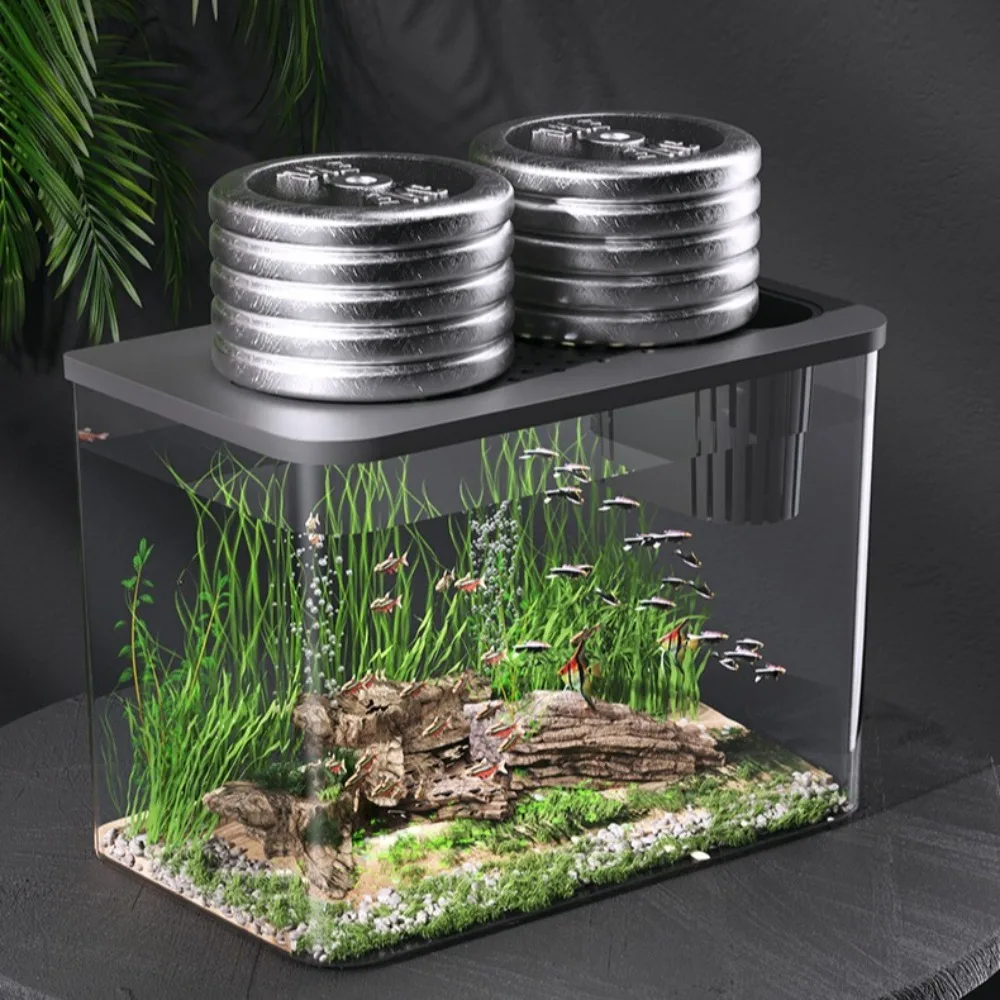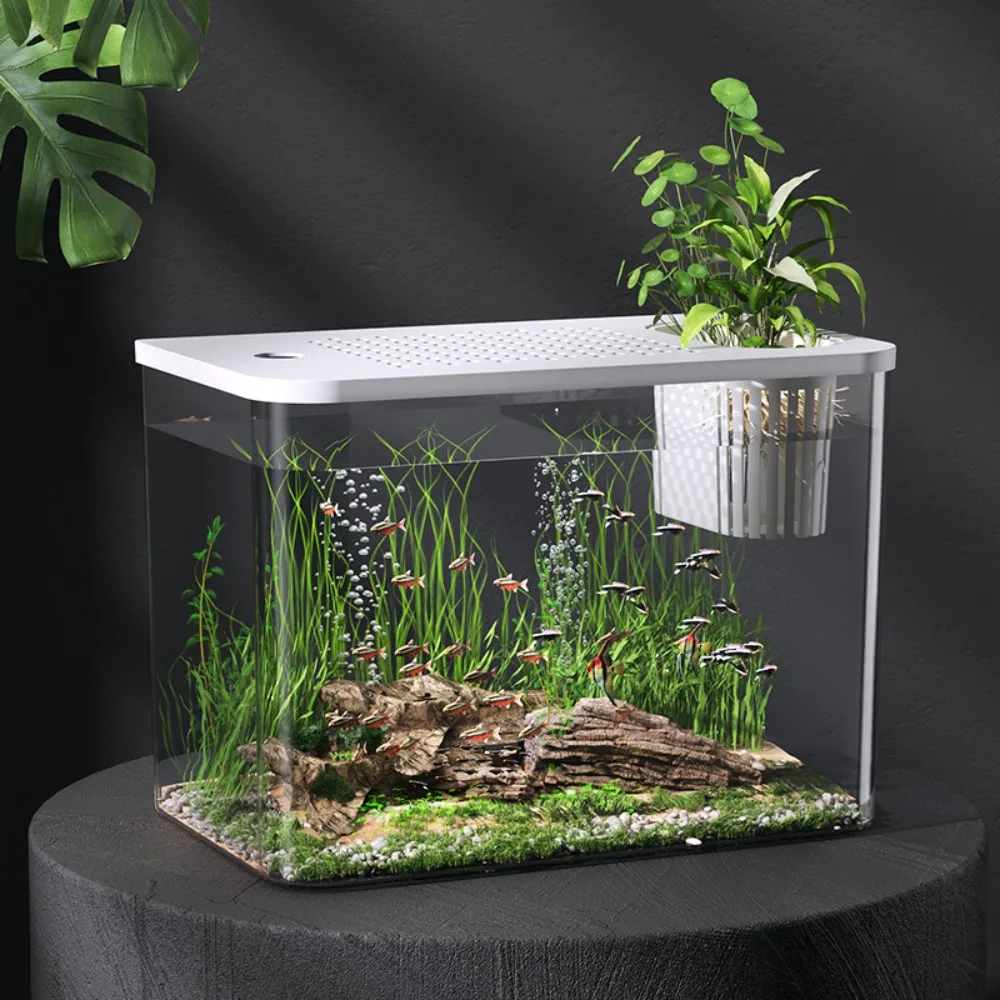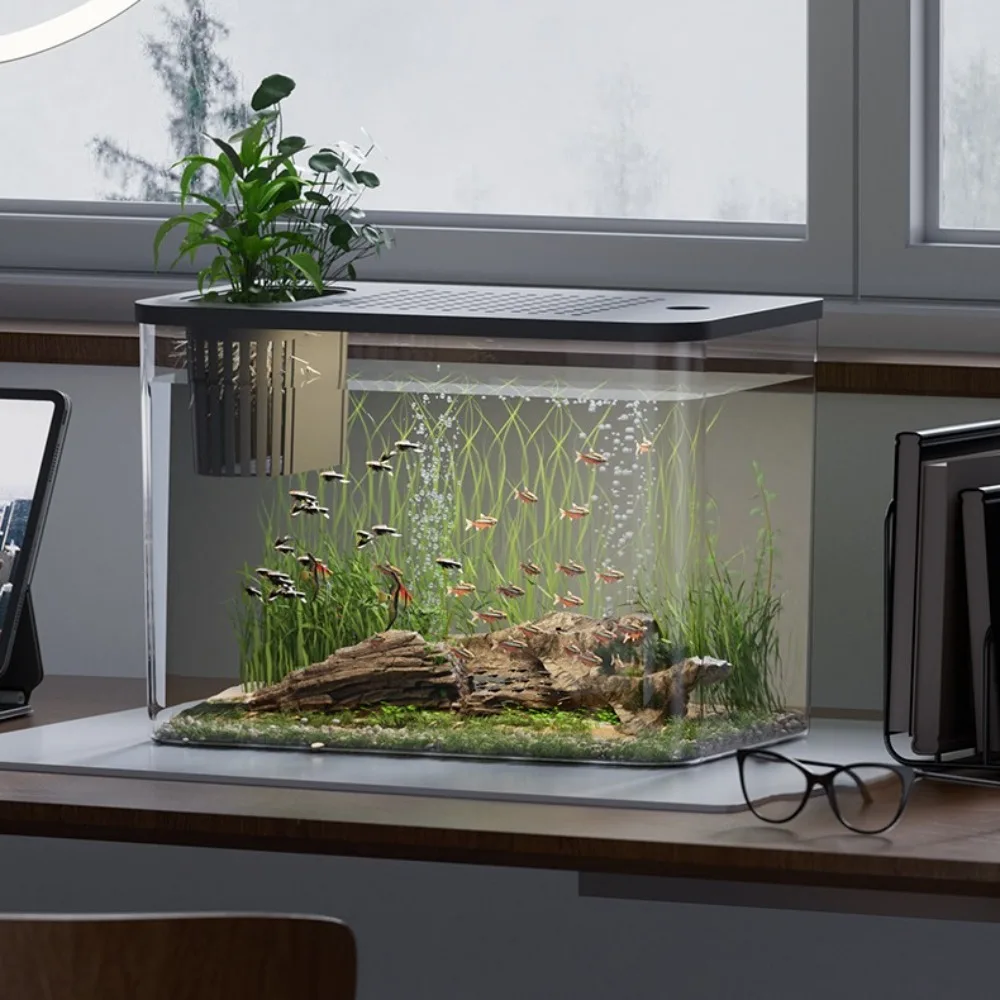Dealing with a cloudy fish tank is a common problem that many aquarium enthusiasts encounter. A murky tank not only detracts from the aesthetic beauty of your aquatic environment, but it can also indicate underlying issues that may affect the health and well-being of your fish. Whether you’re a seasoned aquarist or a beginner, it’s crucial to understand the causes of cloudiness and implement effective solutions. This comprehensive guide will help you diagnose, treat, and prevent a cloudy fish tank, ensuring a crystal-clear, healthy habitat for your aquatic friends.
Bacterial Blooms: A Common Culprit
Bacterial blooms are one of the most frequent causes of cloudy fish tanks, especially in newly set up aquariums. These blooms occur when there’s an overgrowth of beneficial bacteria, which can stem from an excess of nutrients in the water, often introduced by overfeeding or decaying plant matter. To combat a bacterial bloom, start by performing a partial water change, replacing about 25-30% of the tank’s water with fresh, dechlorinated water. Reduce feeding and remove any uneaten food promptly. Ensuring proper filtration and adding beneficial bacterial supplements can also help stabilize the bacterial population. Patience is key, as it may take a few days to a week for the water to clear up.

Algae Overgrowth: The Green Tint Challenge
Algae overgrowth is another common reason behind cloudy fish tank, easily recognizable by a greenish tint to the water. Algae thrive on light and nutrients, so managing these elements is crucial. Start by reducing the amount of light your tank receives: keeping the aquarium lights on for 6-8 hours a day is usually sufficient. If the tank is near a window, consider moving it or using a background to block excessive sunlight. Conduct a thorough cleaning, scrubbing surfaces and ornaments to remove algae buildup. Introducing algae-eating fish or snails can also help keep the algae in check. Regular water changes and ensuring your filter is functioning properly will aid in preventing future blooms.
Dealing with Debris and Waste
Accumulated debris and waste can lead to cloudy water, particularly in overstocked tanks or those with insufficient filtration. Overfeeding is often a significant contributor to waste buildup, as uneaten food decomposes and releases organic compounds into the water. Start by vacuuming the substrate to remove detritus and uneaten food. Performing regular water changes (10-15% weekly) helps maintain water quality. Check your filter media and clean or replace it as necessary, as clogged filters are less effective at removing waste particles. Adjusting feeding routines and ensuring your aquarium isn’t overcrowded can greatly reduce waste accumulation and improve water clarity.
Improper Water Chemistry: Getting the Balance Right
Maintaining proper water chemistry is vital for a clear and healthy fish tank. Imbalances in pH, ammonia, nitrite, and nitrate levels can cause water cloudiness and stress your fish. Regularly test your water parameters using a reliable test kit. Address any imbalances by following specific treatments: perform partial water changes to dilute high toxin levels, use pH adjusters if needed, and add biological filtration media to enhance the nitrogen cycle. Using activated carbon in your filter can help remove dissolved organic compounds that may contribute to cloudiness. Monitoring and adjusting water chemistry as recommended will ensure a stable environment and prevent cloudiness.
Filtration: The Backbone of a Clear Tank
An efficient filtration system is essential for maintaining clear water. There are three main types of filtration: mechanical, biological, and chemical, each playing a crucial role. Mechanical filtration involves removing solid particles from the water, while biological filtration breaks down harmful substances like ammonia and nitrites using beneficial bacteria. Chemical filtration, often involving activated carbon, absorbs impurities and toxins. Ensure your filter is appropriately sized for your tank and perform regular maintenance to keep it functioning optimally. Periodically replace filter media as recommended by the manufacturer and clean the filter components to prevent clogging and ensure efficient water flow.
The Role of Live Plants in Water Clarity
Incorporating live plants into your aquarium can significantly improve water quality and clarity. Plants absorb nutrients and carbon dioxide while releasing oxygen, creating a balanced ecosystem. They compete with algae for nutrients, thereby helping to prevent algae overgrowth. Fast-growing plants like water wisteria, hornwort, and Java moss are particularly effective at absorbing excess nutrients and contributing to a clear tank. Ensure your plants receive adequate light and nutrients for optimal growth. Regularly trim and remove decaying plant material to prevent organic waste buildup. A well-planted aquarium not only enhances the aesthetic appeal but also fosters a healthier environment for your fish.
Regular Maintenance: The Key to Preventing Cloudiness
Consistent maintenance is crucial for preventing and addressing cloudy water. Develop a regular cleaning schedule that includes weekly water changes, substrate vacuuming, and filter maintenance. Test water parameters frequently and keep a log to track any fluctuations. Observing your fish and their behavior can also provide insights into water quality; distressed or lethargic fish may indicate underlying issues. Feeding your fish only what they can consume in a few minutes reduces excess waste. By adhering to a routine maintenance schedule and promptly addressing any changes in water clarity, you can prevent cloudiness and ensure a thriving aquarium.

Advanced Solutions: UV Sterilizers and Water Clarifiers
For particularly stubborn cloudiness issues, advanced solutions like UV sterilizers and water clarifiers can be effective. UV sterilizers use ultraviolet light to kill floating algae, bacteria, and other pathogens, significantly improving water clarity. These devices are especially useful in controlling persistent green water caused by algae blooms. Water clarifiers work by binding small particles into larger clumps, allowing them to be more easily filtered out of the water. While these solutions can be highly effective, they should be used in conjunction with regular maintenance and proper filtration to achieve the best results. Always follow the manufacturer’s instructions for safe and effective use.
Avoiding Common Mistakes: What Not to Do
When dealing with a cloudy fish tank, it’s important to avoid common mistakes that can exacerbate the problem. Overcleaning the tank and removing too much beneficial bacteria can destabilize the nitrogen cycle, leading to further cloudiness. Avoid overstocking your tank, as too many fish can produce excess waste that overwhelms the filtration system. Be cautious with chemical treatments, as they can temporarily clear the water but do not address the underlying issues and can harm fish and plants if misused. Patience and a balanced approach are key; avoid drastic measures and focus on gradual, consistent maintenance.
Consulting with Professionals: When to Seek Help
Despite your best efforts, there may be times when resolving a cloudy tank becomes challenging. Consulting with a professional aquarist or visiting a reputable pet store can provide valuable insights and assistance. Professionals can help diagnose persistent issues, recommend appropriate treatments, and ensure that your aquarium’s ecosystem is balanced and healthy. Bringing a sample of your water to a local pet store for testing can pinpoint specific problems. Seeking advice from experienced hobbyists through forums or local aquarium clubs can also provide practical tips and support, helping you address cloudiness issues effectively.
Reaping the Benefits: A Clear and Healthy Aquarium
Achieving and maintaining a clear fish tank has numerous benefits beyond aesthetic appeal. Clear water provides a more enjoyable viewing experience, allowing you to fully appreciate the beauty and behavior of your fish. It also indicates a healthy and stable aquatic environment, reducing stress on your fish and promoting their overall well-being. Clear water facilitates better light penetration, benefiting live plants and contributing to a balanced ecosystem. By implementing the strategies discussed in this guide, you can enjoy the rewards of a thriving, crystal-clear aquarium, providing a safe and beautiful home for your aquatic friends.

Conclusion: Achieving Clarity and Balance
Dealing with a cloudy fish tank can be frustrating, but understanding the root causes and implementing effective solutions can restore clarity and balance to your aquarium. Whether the cloudiness is due to bacterial blooms, algae overgrowth, debris accumulation, or water chemistry imbalances, addressing each issue with targeted strategies ensures a healthy environment for your fish. Consistent maintenance, proper filtration, and the incorporation of live plants contribute significantly to preventing cloudiness. Advanced solutions like UV sterilizers and water clarifiers can provide additional support, while avoiding common mistakes ensures the stability of your tank’s ecosystem. By educating yourself and seeking professional advice when needed, you can successfully maintain a clear, thriving aquarium.










